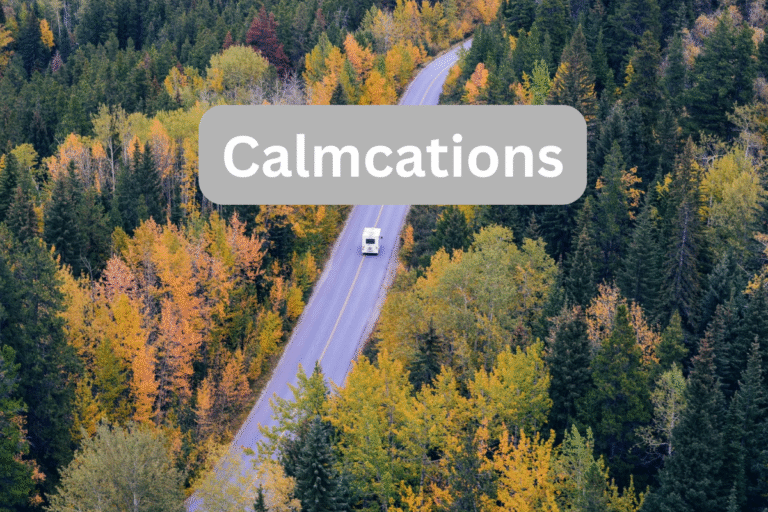Being a digital nomad sounds like freedom — working from the beaches of Bali, the cafes of Bangkok, or a mountain view in Chiang Mai.
But every experienced nomad knows the truth: balancing travel and work is not easy.
You deal with time zones, slow Wi-Fi, distractions, and the temptation to explore all day. Without structure, your productivity drops fast — and so does your income.
That’s why building the right routines for remote work is essential. The goal isn’t to copy a strict 9-to-5 schedule but to create systems that keep you focused, healthy, and inspired while moving from one country to another.
Here are 7 proven routines that help digital nomads find balance between travel and work — and actually enjoy both.
1. Start Every Day with a Grounding Morning Routine
When you constantly change cities or time zones, your mind can feel scattered. A simple morning routine helps you anchor yourself, no matter where you wake up.
It doesn’t need to be fancy — just consistent.
Here’s what many digital nomads do:
- Stretch for 5–10 minutes
- Drink a full glass of water
- Journal or plan the day
- Enjoy coffee or tea in peace
- Do one small creative thing (reading, sketching, affirmations)
This short ritual signals your brain: “It’s a new day, and I’m in control.”
It keeps your emotions stable, builds focus, and gives your travels a sense of rhythm.
Pro Tip: Keep one part of your morning constant — the same drink, playlist, or notebook. Familiar things make every new city feel like home.
If you’re still deciding where to start your digital nomad journey, check out our guide on Top 15 Digital Nomad Cities to Live and Work in 2025.
2. Work in Time Blocks, Not Hours
Traditional jobs measure hours. Nomads measure energy.
When you’re traveling, your schedule might not fit the typical 9-to-5 pattern. Maybe you’re more productive at 6 a.m. or after sunset. That’s okay — just use time blocking.
Example:
- Deep work: 8:00–10:00 a.m.
- Light tasks/emails: 11:00–12:00 p.m.
- Exploration/lunch: 12:00–3:00 p.m.
- Second work block: 4:00–6:00 p.m.
After that, stop. You’ll notice you complete more in 4 focused hours than others do in 8 distracted ones.
Tools that help:
- Google Calendar (color-coded blocks)
- Notion or ClickUp (daily planning)
- Focus To-Do (Pomodoro timer)
This system lets you work efficiently and have enough time to experience your location fully.
3. Choose Your Workspace Intentionally
Not every café with Wi-Fi is a good work environment.
Where you work affects how much you get done — and how happy you feel.
Before sitting down to work, ask yourself:
- Is the internet stable enough for calls?
- Is there noise or distractions?
- Is there enough light and seating comfort?
Coworking spaces often offer the best balance: fast internet, ergonomic chairs, air-conditioning, and a community of motivated people.
But if you prefer cafés, do a quick Google Maps search for “laptop-friendly café” or use websites like:
- WorkFrom.co
- Nomad List
- WiFi Map
Having a workspace that “feels right” sets the mood for a productive day.
Bonus: Try working from different spots during the week — café on Monday, coworking space on Wednesday, park or library on Friday. A change of environment keeps your mind fresh.
Want to stretch your budget while living abroad? Read our detailed list of Top 20 Cheapest Countries to Live Comfortably in 2025.
4. Move Your Body Every Day
Remote work can easily make you sedentary — hours on a laptop, long flights, bus rides, or sitting in hostels.
But your physical energy directly affects your mental focus.
You don’t need a gym membership in every country.
Instead, build movement into your daily routine:
- 15-minute stretch before work
- Quick bodyweight workouts
- Walking to explore your area instead of always taking Grab or taxis
- Using hotel stairs instead of elevators
Tip: You can use free YouTube channels like “FitnessBlender” or “Pamela Reif” for quick hotel-room workouts.
Exercise helps regulate mood, improve sleep, and fight jet lag — three things every traveler struggles with.
5. Eat Consistently and Stay Hydrated
Traveling makes it easy to forget meals, especially when you’re moving from one destination to another.
But skipping nutrition leads to fatigue, mood swings, and brain fog — not great for productivity.
Try to keep a simple food routine:
- Eat something light but nutritious for breakfast (eggs, fruit, yogurt, oats)
- Stay hydrated — 2 liters a day minimum
- Avoid working long hours without food
- Limit sugary drinks and energy drinks
Whenever possible, explore local healthy foods — it helps you connect with the culture and keeps meals exciting.
For example: smoothie bowls in Bali, rice bowls in Japan, or grilled vegetables in Thailand.
Bonus Tip: Carry small snacks like nuts, protein bars, or bananas. They help when you’re traveling between cities or working long hours.
6. Create an “Offline Evening Routine”
Digital nomads live online — from earning income to keeping in touch with family.
But constant connectivity can burn you out fast.
Set a digital sunset — a time each night when all screens go off.
For example, no devices after 9 p.m.
Use that time to:
- Reflect on your day
- Journal about your travels
- Read a physical book
- Take a quiet walk
This routine resets your mind and improves sleep quality, which is crucial when you change time zones often.
Try: The “Do Not Disturb” feature on your phone after 9 p.m. It forces you to disconnect and recharge properly.
7. Plan Rest Days Like Work Days
Digital nomads often forget the difference between resting and doing nothing.
Resting is recovery, not laziness.
Schedule full rest days into your travel calendar.
That means:
- No laptop
- No emails
- No content creation
Just live.
Explore local attractions, try a new food, or take a day trip.
Your body and mind will thank you — and your creativity will return stronger.
Even top entrepreneurs and creators take breaks. As they say: rest is part of the work.
Bonus: Create a “Transition Routine” When Moving to a New Place
Every time you move to a new city or country, it takes your brain a few days to adapt.
Make that easier by creating a transition ritual:
- Unpack immediately (don’t live out of your suitcase)
- Find your local grocery store or café
- Check Wi-Fi speed and best work spots nearby
- Plan your next 3 days before exploring
It sounds simple, but it helps your brain feel settled faster.
Final Thoughts
Balancing travel and work as a remote worker is not about perfection — it’s about rhythm.
You’ll have productive days and lazy ones, good Wi-Fi and terrible ones. What matters is consistency.
When you have stable routines — even small ones — you can work efficiently, explore freely, and truly live the digital nomad lifestyle you dreamed of.
Freedom means nothing without balance.
So next time you open your laptop in a new city, take a deep breath, enjoy your coffee, and remember:
You’re not just working remotely — you’re living globally.



